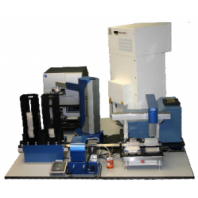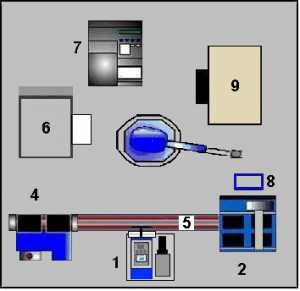VaryScreen – Multi-Assay Screening System
Finally, A Versatile Screening & Development System!
Experience the new-found freedom and flexibility that the VaryScreen I brings to assay screening and development for drug discovery research applications and high throughput screening environments.
Integrated Workcell
VaryScreen I integrates laboratory instrumentation with plate and liquid handling robots and software to automate all aspects of an assay. The basic configuration includes a multimode microplate reader with fluorescence, luminescence, and UV-Visible detectors. The system’s SoftLinx software controls all of the robot’s actions in an efficient, coordinated operation.
One System Performs Six of the Most Common Assays
There’s no need to purchase several dedicated systems for each assay type. Now there’s a workcell that lets you shift from one type of assay to another. The VaryScreen performs six of the most common biological assays conducted today with pre-defined protocols below. And you can introduce countless variations with just a few user-friendly software modifications.
- Fluorescence Intensity
- Fluorescence Polarization
- FRET (and variations e.g., LANCE and VIPER)
- Luminescence (e.g., Luciferase Reporter)
- ELISA
- AlphaScreen
Speed up Assay Development, Validation and Execution
For the first time, VaryScreen I makes it easy to evaluate the impact of various changes in assay conditions to develop, model and validate your in-house screens.
- Applications
- Features
- Specifications
- Literature
One System, Many Assays
The VaryScreen I includes pre-written protocols for: UV-Visible absorption, Fluorescence Polarization (eg. HitHunter IP3), FRET (including variations such as LANCE and VIPER), Luminescence (eg, Luciferase Reporter), ELISA, and AlphaScreen assays. A basic description of each assay type is provided below.
![]()
![]()
![]()
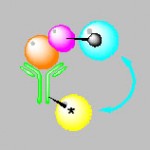 AlphaScreen
AlphaScreen
AlphaScreen is a bead-based assay which can be used to determine the extent in which two molecules are bound to each other. One component is covalently bound to an acceptor bead, which produces singlet oxygen upon illumination. The other component is attached to an acceptor bead that reacts with singlet oxygen to produce a specific fluorescence signal. The signal will only be produced when the beads are in close proximity which can only occur when the two component molecules are bound.
![]()
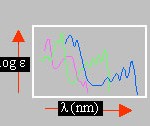 UV-Visible Absorbance
UV-Visible Absorbance
Many assays can be designed to take advantage of the specific absorbance of organic molecules that may be created or consumed in a biochemical reaction. Determination of the quantity of the absorbing substance, or analysis of kinetics of a reaction can be carried out. The Synergy 4 uses a xenon flash lamp and a monochromator for wavelength selection. It allows absorbance measurement within the range of 200 to 999 nanometers in 1 nanometer increments.
 Fluorescence Polarization
Fluorescence Polarization
This method can be used to assess the degree of movement of a molecule after there is a change in its environment. For example, BioTek’s Predictor hERG assay places a tracer molecule at the intracellular side of the ion channel. The tracer is designed to produce a strong response to polarized light. When an ion channel inhibitor is added, the tracer is displaced, and its resulting randomized motion greatly reduces the degree of polarization that is observed.
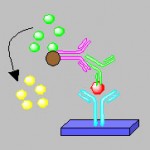 Elisa
Elisa
The Enzyme-Linked ImmunoSorbent Assay is commonly used to detect the presence of an antibody or the corresponding antigen in a given sample. There are several general variations to the protocol, but typically there is a sequence of dispense and wash steps until a sandwich of binding molecules remain with an active enzyme attached to the last component. If the original molecule being assayed was present in the sample, the enzyme-linked protein will remain after the last wash step. When the appropriate enzyme substrate is then added, an obvious color change indicates a positive result.
 Luciferase Reporter
Luciferase Reporter
The Synergy 4 is also capable of carrying out many reporter assays, such as beta-Galactoside, Glow and Firefly Luciferase. Luciferase reporter vectors are relatively easy to construct and transfect into plasmid DNA. Once cell extracts are prepared, measurement of luciferase activity is a good indicator of the presence of the desired gene expression.
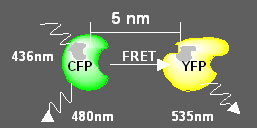 VaryScreen I – FRET
VaryScreen I – FRET
Several key assays are frequently used in drug screening that take advantage of intermolecular transfer of fluorescense resonance energy transfer. Many kits are available that support such assays as LANCE, VIPER and other TR-FRET protocols. All of these are easily supported by the VaryScreen.
Model, Optimize and Run In-House Assays
Evaluate subtle changes in experimental conditions
- Solvents, stoichiometry, pH, temperature, time, etc.
Determine importance of individual steps
- Incubation, agitation, filtration
Introduce intelligence into protocols
- Complex control structures
- Schedule e-mail alerts or responses to specific milestones
Includes 6 general pre-written protocols to get you started
- UV-VIS Absorption
- Fluorescence Polarization
- FRET (LANCE, VIPR)
- Luminescence (Reporter Assays)
- ELISA
- Alpha Screen
Easily Customized
Add new features
- A second reader for a wider variety of detection methods
- Add a bioreactor or colony picker to provide sample input
- Include a microbalance to gravimetrically quantify sample dispenses
Duplicate heavily used features
- Additional plate handling robots to extend the reach of the workcell
- Liquid handlers for increased parallel processing – Micro10 for batch dispensing, SOLO for additional complex pipetting needs
Omit or substitue unrequired features
- Already have an incubator?
- Don’t need wash steps?
- Prefer a different piece of equipment for a specific task?
Full Software Control
- Custom interfaces available for any device
- Opportunistic scheduling maximizes efficiency
- Multiple parallel methods can be run
- A reader can be used during a screen and the software will work around the momentarily unavailable device
- Supports full recovery from unscheduled shutdowns or interruptions
VaryScreen I contains robotic components to carry out a wide variety of screening tasks: Liquid Handling, Plate Handling, Reading and other assorted functions. The basic system contains a mixture of devices from Hudson Control Group and other third party vendors; however, the system can be customized to use any particular device to carry out a specific function.
1. MicroFlex 12-Channel Dispenser
2. SOLO Single Channel Pipetto
3. PlateCrane EX
4. LabLinx – StackLink
5. LabLinx – TrackLink
6. Multi-Mode Reade
7. rELx405 Washer
8. TeleShake Microplate Agitator
9. STX44 Incubator
Currently Supported Multi-Mode Plate Readers
- Bio-Tek Synergy HT Integration
- BMG LabTech FLUOstar
- BMG Labtech PHERAstar
- GE LifeSciences LeadSeeker
- MDC FlexStation Series
- PE Lifesciences Envision
- PE LifeSciences Victor
- PE LifeSciences Fusion
- Berthold Mithras (MikroWin 2000)
- Tecan Infinite 200
- Tecan SAFIRE
- Tecan SPECTRA & SPECTRAFluor
- Tecan ULTRA

